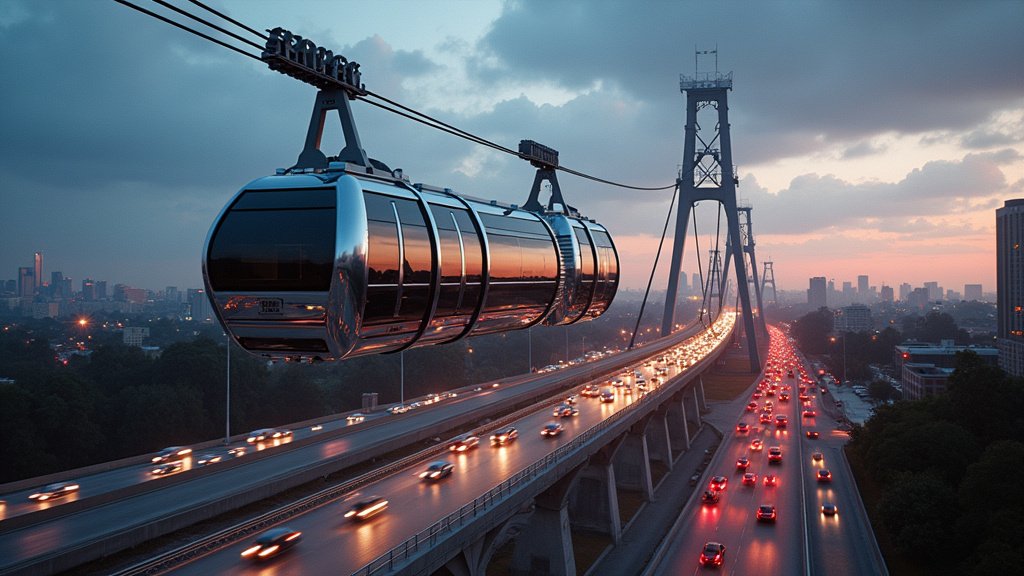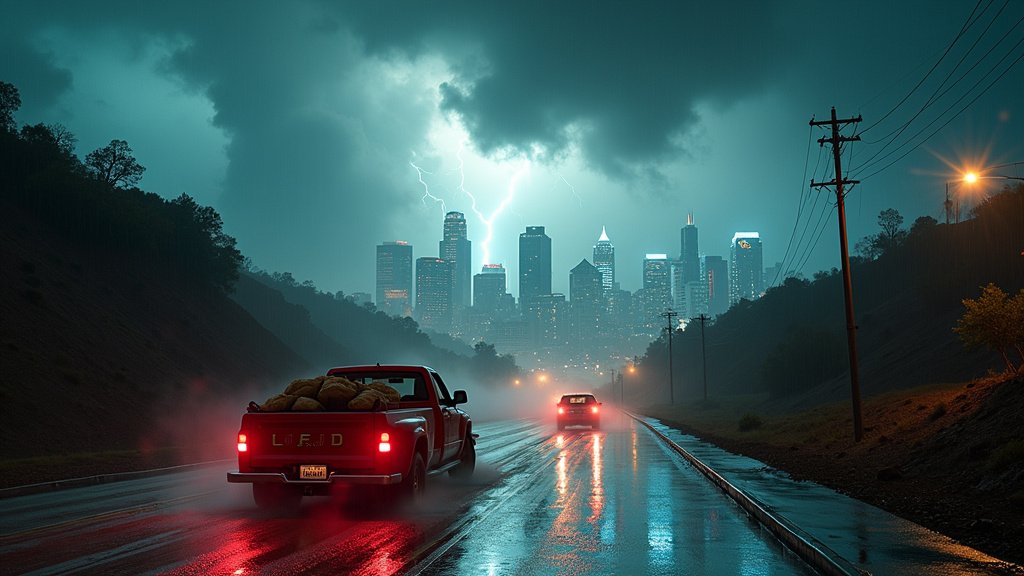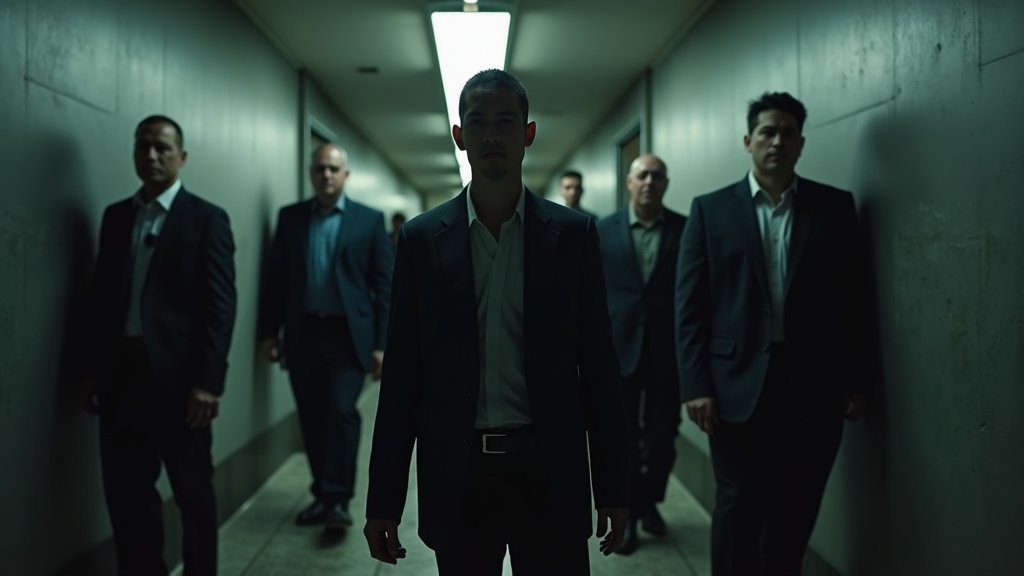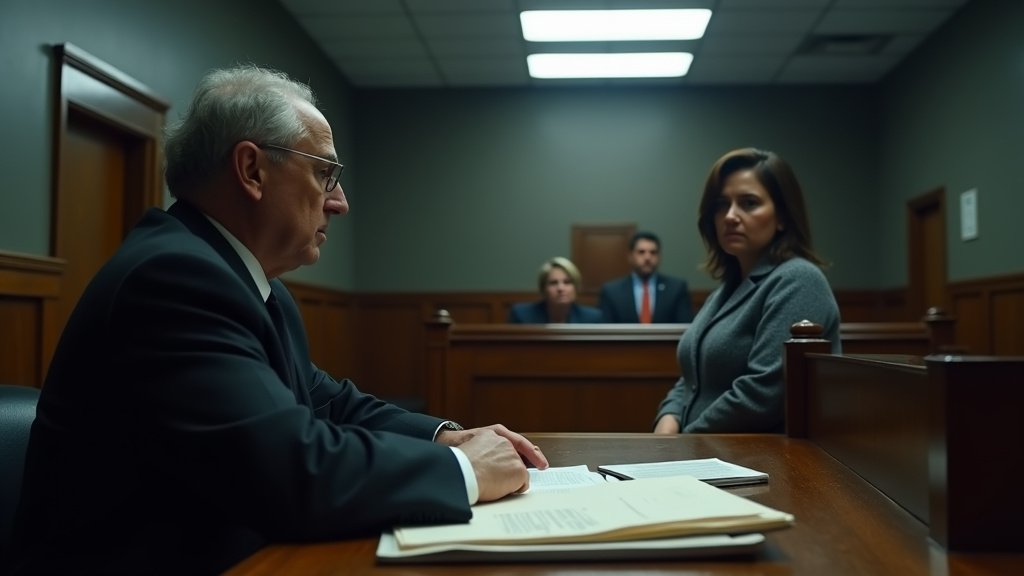A proposed $500 million aerial tramway designed to connect downtown Los Angeles’ Union Station to Dodger Stadium has encountered significant turbulence, with the Los Angeles City Council voting overwhelmingly to urge transportation officials to ground the ambitious Dodger Stadium Gondola project. The move signals a major political hurdle for developers, despite ongoing efforts to gain final approvals for the Dodger Stadium Gondola.
The Vision for Aerial Transit: Dodger Stadium Gondola
The Dodger Stadium gondola, initially proposed by Aerial Rapid Transit Technologies, LLC (now operating as Zero Emissions Transit and backed by former Dodgers owner Frank McCourt), aims to provide a swift, five-minute connection between Union Station and the ballpark, about a mile away. Proponents, including the Dodgers organization itself, tout the Dodger Stadium Gondola project as a revolutionary solution to the notorious transit congestion that plagues game days and other stadium events. They argue the Dodger Stadium Gondola would offer a convenient, eco-friendly alternative to driving, carrying an estimated 5,000 people per hour in each direction and potentially reducing car usage. Supporters also emphasize that the project is intended to be privately funded, with claims it would not cost taxpayers any money for construction, maintenance, or operations, making the Dodger Stadium Gondola a potentially cost-effective option for public transportation.
Mounting Opposition and Criticisms of the Dodger Stadium Gondola
However, the Dodger Stadium Gondola project has faced escalating opposition, culminating in a decisive 12-1 vote by the Los Angeles City Council to recommend that the LA County Metropolitan Transportation Authority (Metro) reject the proposal. Councilmember Eunisses Hernandez, who introduced the resolution, characterized the gondola as a “private development scheme disguised as transportation, designed to raise the value of a billionaire’s parking lots, not to serve working Angelenos”.
Key criticisms highlighted by opponents and reflected in the council’s resolution include:
* Limited Traffic Impact: A comprehensive study conducted by the UCLA Mobility Lab found that the Dodger Stadium Gondola would have a minimal impact on reducing transit congestion around Dodger Stadium, potentially taking only around 608 cars off the road on a sold-out game night, far fewer than the 3,000 claimed by proponents. Researchers also suggested that many fans might drive to Union Station transit hub to use the gondola rather than opting for public transportation to reach the station.
* Environmental and Community Concerns: Critics point to the permanent removal of approximately 160 trees from a beloved park and the visual impact of large cable-supporting towers on nearby communities, many of which are lower-income. There are also concerns about noise pollution during the estimated two-year construction period, impacting the communities surrounding the proposed Dodger Stadium Gondola route.
* Financial Transparency: The nonprofit group Stop The Gondola has raised questions about the Dodger Stadium Gondola project’s financial plan, expressing uncertainty about whether taxpayers could ultimately be responsible for construction costs, ongoing maintenance, or operational expenses, despite assurances of private funding for the aerial tramway project.
* Questionable Transit Benefit: Opponents argue that the Dodger Stadium Gondola serves only a single, specific route and does not represent a comprehensive public transportation solution that benefits the broader Los Angeles community or addresses existing transportation challenges effectively.
Key Players in the Dodger Stadium Gondola Debate
The controversy involves several prominent figures and organizations. Frank McCourt, the former owner of the Los Angeles Dodgers and current co-owner of the stadium’s parking lots, is a central figure, having initially proposed the Dodger Stadium Gondola in 2018 through his company. The project was later transferred to the nonprofit Zero Emissions Transit. On the political front, Mayor Karen Bass, who previously supported the project as a Metro board member, must now decide whether to sign off on the City Council’s resolution, which would be a significant blow to the Dodger Stadium Gondola project’s advancement. Metro has served as the lead agency for the Environmental Impact Report (EIR), which, while certified, has faced legal challenges and calls for revisions, particularly concerning construction noise impacts related to the aerial tramway project.
Future Uncertainties and Hurdles for the Dodger Stadium Gondola
The City Council’s resolution is an advisory measure, not a final veto. However, it signifies a strong stance against the Dodger Stadium Gondola project and indicates that securing future approvals, including a full City Council vote expected next year, will be an increasingly difficult endeavor for the developers. The project also requires approvals from state agencies like Caltrans and the State Park and Recreation Commission, adding further layers of regulatory scrutiny to the Dodger Stadium Gondola proposal.
The future of the Dodger Stadium gondola remains uncertain. While proponents champion the Dodger Stadium Gondola as an innovative transit solution, a growing chorus of city officials, environmental advocates, and community members view it as a private venture that poses significant risks to public space and local residents, with questionable benefits for Los Angeles’s transit needs. This featured Los Angeles news highlights a critical juncture for the controversial Dodger Stadium Gondola project, amidst discussions about Union Station transit and overall public transportation improvements.





